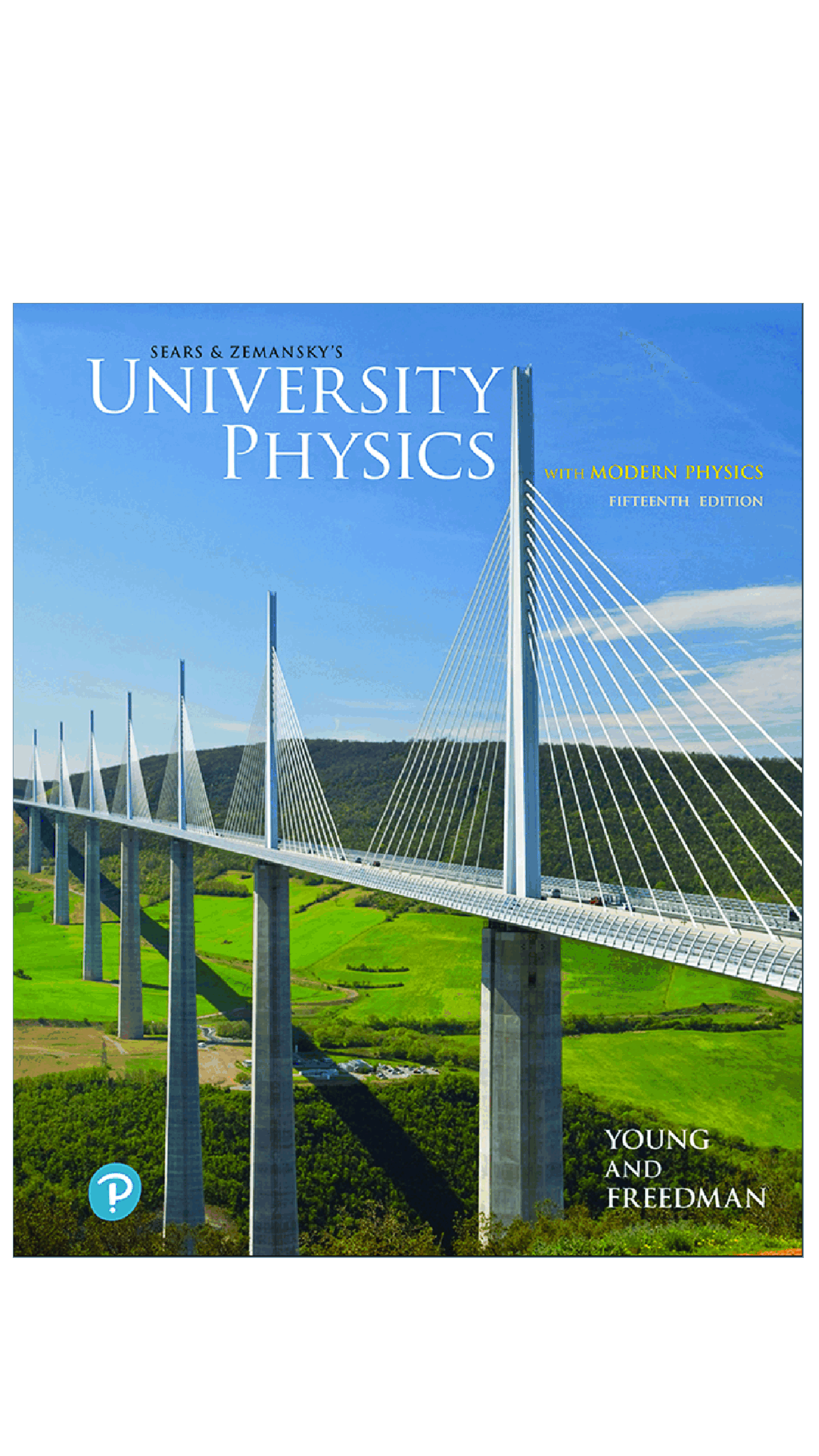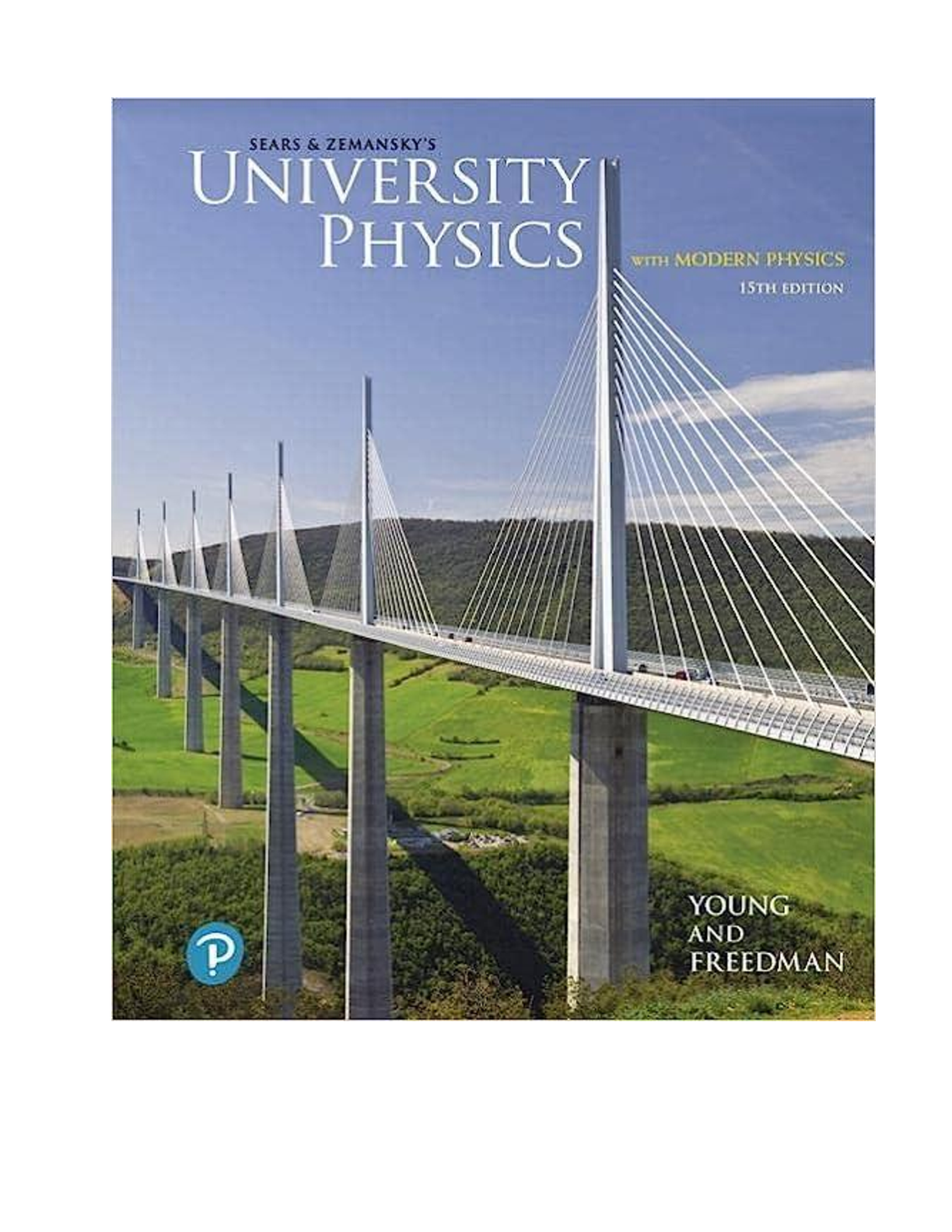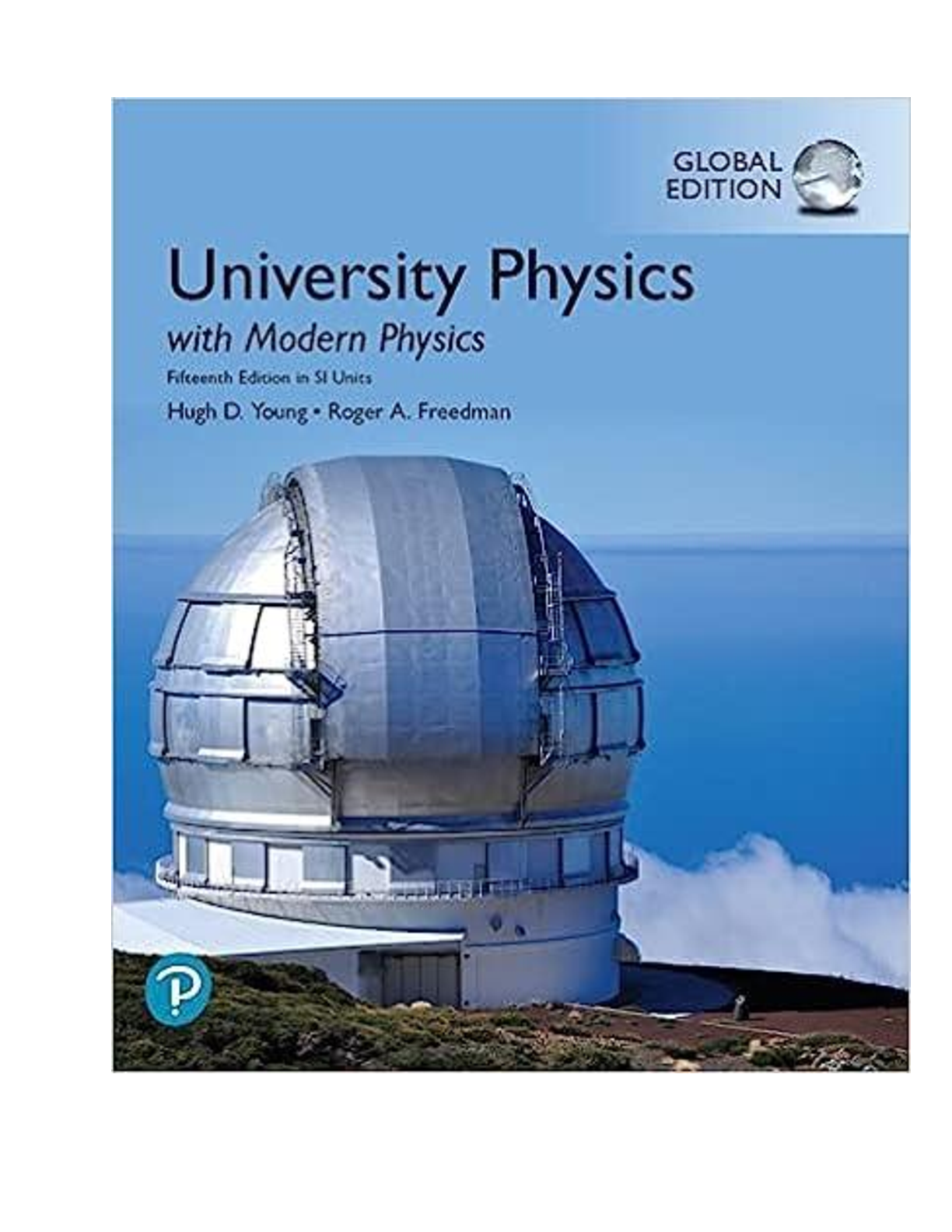Physics > eBook-PDF > [eBook] [PDF] University Physics with Modern Physics, 15th Edition By Hugh Young, Roger Freedman (All)
[eBook] [PDF] University Physics with Modern Physics, 15th Edition By Hugh Young, Roger Freedman
Document Content and Description Below
Title page Copyright Page About the Authors Preface Acknowledgments Detailed Contents Mechanis 1 Units, Physical Quantities, and Vectors 1.1 The Nature of Physics 1.2 Solving Physics Problems... 1.3 Standards and Units 1.4 Using and Converting Units 1.5 Uncertainty and Significant Figures 1.6 Estimates and Orders of Magnitude 1.7 Vectors and Vector Addition 1.8 Components of Vectors 1.9 Unit Vectors 1.10 Products of Vectors Summary Guided Practice Questions/Exercises/Problems 2 Motion Along a Straight Line 2.1 Displacement, Time, and Average Velocity 2.2 Instantaneous Velocity 2.3 Average and Instantaneous Acceleration 2.4 Motion with Constant Acceleration 2.5 Freely Falling Objects 2.6 Velocity and Position by Integration Summary Guided Practice Questions/Exercises/Problems 3 Motion in Two or Three Dimensions 3.1 Position and Velocity Vectors 3.2 The Acceleration Vector 3.3 Projectile Motion 3.4 Motion in a Circle 3.5 Relative Velocity Summary Guided Practice Questions/Exercises/Problems 4 Newton’s Laws of Motion 4.1 Force and Interactions 4.2 Newton’s First Law 4.3 Newton’s Second Law 4.4 Mass and Weight 4.5 Newton’s Third Law 4.6 Free-Body Diagrams Summary Guided Practice Questions/Exercises/Problems 5 Applying Newton’s Laws 5.1 Using Newton’s First Law: Particles in Equilibrium 5.2 Using Newton’s Second Law: Dynamics of Particles 5.3 Friction Forces 5.4 Dynamics of Circular Motion 5.5 The Fundamental Forces of Nature Summary Guided Practice Questions/Exercises/Problems 6 Work and Kinetic Energy 6.1 Work 6.2 Kinetic Energy and the Work–Energy Theorem 6.3 Work and Energy with Varying Forces 6.4 Power Summary Guided Practice Questions/Exercises/Problems 7 Potential Energy and Energy Conservation 7.1 Gravitational Potential Energy 7.2 Elastic Potential Energy 7.3 Conservative and Nonconservative Forces 7.4 Force and Potential Energy 7.5 Energy Diagrams Summary Guided Practice Questions/Exercises/Problems 8 Momentum, Impulse, and Collisions 8.1 Momentum and Impulse 8.2 Conservation of Momentum 8.3 Momentum Conservation and Collisions 8.4 Elastic Collisions 8.5 Center of Mass 8.6 Rocket Propulsion Summary Guided Practice Questions/Exercises/Problems 9 Rotation of Rigid Bodies 9.1 Angular Velocity and Acceleration 9.2 Rotation with Constant Angular Acceleration 9.3 Relating Linear and Angular Kinematics 9.4 Energy in Rotational Motion 9.5 Parallel-Axis Theorem 9.6 Moment-of-Inertia Calculations Summary Guided Practice Questions/Exercises/Problems 10 Dynamics of Rotational Motion 10.1 Torque 10.2 Torque and Angular Acceleration for a Rigid Body 10.3 Rigid-Body Rotation About a Moving Axis 10.4 Work and Power in Rotational Motion 10.5 Angular Momentum 10.6 Conservation of Angular Momentum 10.7 Gyroscopes and Precession Summary Guided Practice Questions/Exercises/Problems 11 Equilibrium and Elasticity 11.1 Conditions for Equilibrium 11.2 Center of Gravity 11.3 Solving Rigid-Body Equilibrium Problems 11.4 Stress, Strain, and Elastic Moduli 11.5 Elasticity and Plasticity Summary Guided Practice Questions/Exercises/Problems 12 Fluid Mechanics 12.1 Gases, Liquids, and Density 12.2 Pressure in a Fluid 12.3 Buoyancy 12.4 Fluid Flow 12.5 Bernoulli’s Equation 12.6 Viscosity and Turbulence Summary Guided Practice Questions/Exercises/Problems 13 Gravitation 13.1 Newton’s Law of Gravitation 13.2 Weight 13.3 Gravitational Potential Energy 13.4 The Motion of Satellites 13.5 Kepler’s Laws and the Motion of Planets 13.6 Spherical Mass Distributions 13.7 Apparent Weight and the Earth’s Rotation 13.8 Black Holes Summary Guided Practice Questions/Exercises/Problems 14 Periodic Motion 14.1 Describing Oscillation 14.2 Simple Harmonic Motion 14.3 Energy in Simple Harmonic Motion 14.4 Applications of Simple Harmonic Motion 14.5 The Simple Pendulum 14.6 The Physical Pendulum 14.7 Damped Oscillations 14.8 Forced Oscillations and Resonance Summary Guided Practice Questions/Exercises/Problems Waves/Acoustics 15 Mechanical Waves 15.1 Types of Mechanical Waves 15.2 Periodic Waves 15.3 Mathematical Description of a Wave 15.4 Speed of a Transverse Wave 15.5 Energy in Wave Motion 15.6 Wave Interference, Boundary Conditions, and Superposition 15.7 Standing Waves on a String 15.8 Normal Modes of a String Summary Guided Practice Questions/Exercises/Problems 16 Sound and Hearing 16.1 Sound Waves 16.2 Speed of Sound Waves 16.3 Sound Intensity 16.4 Standing Sound Waves and Normal Modes 16.5 Resonance and Sound 16.6 Interference of Waves 16.7 Beats 16.8 The Doppler Effect 16.9 Shock Waves Summary Guided Practice Questions/Exercises/Problems Thermodynamics 17 Temperature and Heat 17.1 Temperature and Thermal Equilibrium 17.2 Thermometers and Temperature Scales 17.3 Gas Thermometers and the Kelvin Scale 17.4 Thermal Expansion 17.5 Quantity of Heat 17.6 Calorimetry and Phase Changes 17.7 Mechanisms of Heat Transfer Summary Guided Practice Questions/Exercises/Problems 18 Thermal Properties of Matter 18.1 Equations of State 18.2 Molecular Properties of Matter 18.3 Kinetic-Molecular Model of an Ideal Gas 18.4 Heat Capacities 18.5 Molecular Speeds 18.6 Phases of Matter Summary Guided Practice Questions/Exercises/Problems 19 The First Law of Thermodynamics 19.1 Thermodynamic Systems 19.2 Work Done During Volume Changes 19.3 Paths Between Thermodynamic States 19.4 Internal Energy and the First Law of Thermodynamics 19.5 Kinds of Thermodynamic Processes 19.6 Internal Energy of an Ideal Gas 19.7 Heat Capacities of an Ideal Gas 19.8 Adiabatic Processes for an Ideal Gas Summary Guided Practice Questions/Exercises/Problems 20 The Second Law of Thermodynamics 20.1 Directions of Thermodynamic Processes 20.2 Heat Engines 20.3 Internal-Combustion Engines 20.4 Refrigerators 20.5 The Second Law of Thermodynamics 20.6 The Carnot Cycle 20.7 Entropy 20.8 Microscopic Interpretation of Entropy Summary Guided Practice Questions/Exercises/Problems Electromagnetism 21 Electric Charge and Electric Field 21.1 Electric Charge 21.2 Conductors, Insulators, and Induced Charges 21.3 Coulomb’s Law 21.4 Electric Field and Electric Forces 21.5 Electric-Field Calculations 21.6 Electric Field Lines 21.7 Electric Dipoles Summary Guided Practice Questions/Exercises/Problems 22 Gauss’s Law 22.1 Charge and Electric Flux 22.2 Calculating Electric Flux 22.3 Gauss’s Law 22.4 Applications of Gauss’s Law 22.5 Charges on Conductors Summary Guided Practice Questions/Exercises/Problems 23 Electric Potential 23.1 Electric Potential Energy 23.2 Electric Potential 23.3 Calculating Electric Potential 23.4 Equipotential Surfaces 23.5 Potential Gradient Summary Guided Practice Questions/Exercises/Problems 24 Capacitance and Dielectrics 24.1 Capacitors and Capacitance 24.2 Capacitors in Series and Parallel 24.3 Energy Storage in Capacitors and Electric-Field Energy 24.4 Dielectrics 24.5 Molecular Model of Induced Charge 24.6 Gauss’s Law in Dielectrics Summary Guided Practice Questions/Exercises/Problems 25 Current, Resistance, and Electromotive Force 25.1 Current 25.2 Resistivity 25.3 Resistance 25.4 Electromotive Force and Circuits 25.5 Energy and Power in Electric Circuits 25.6 Theory of Metallic Conduction Summary Guided Practice Questions/Exercises/Problems 26 Direct-Current Circuits 26.1 Resistors in Series and Parallel 26.2 Kirchhoff’s Rules 26.3 Electrical Measuring Instruments 26.4 R-C Circuits 26.5 Power Distribution Systems Summary Guided Practice Questions/Exercises/Problems 27 Magnetic Field and Magnetic Forces 27.1 Magnetism 27.2 Magnetic Field 27.3 Magnetic Field Lines and Magnetic Flux 27.4 Motion of Charged Particles in a Magnetic Field 27.5 Applications of Motion of Charged Particles 27.6 Magnetic Force on a Current-Carrying Conductor 27.7 Force and Torque on a Current Loop 27.8 The Direct-Current Motor 27.9 The Hall Effect Summary Guided Practice Questions/Exercises/Problems 28 Sources of Magnetic Field 28.1 Magnetic Field of a Moving Charge 28.2 Magnetic Field of a Current Element 28.3 Magnetic Field of a Straight Current-Carrying Conductor 28.4 Force Between Parallel Conductors 28.5 Magnetic Field of a Circular Current Loop 28.6 Ampere’s Law 28.7 Applications of Ampere’s Law 28.8 Magnetic Materials Summary Guided Practice Questions/Exercises/Problems 29 Electromagnetic Induction 29.1 Induction Experiments 29.2 Faraday’s Law 29.3 Lenz’s Law 29.4 Motional Emf 29.5 Induced Electric Fields 29.6 Eddy Currents 29.7 Displacement Current and Maxwell’s Equations 29.8 Superconductivity Summary Guided Practice Questions/Exercises/Problems 30 Inductance 30.1 Mutual Inductance 30.2 Self-Inductance and Inductors 30.3 Magnetic-Field Energy 30.4 The R-L Circuit 30.5 The L-C Circuit 30.6 The L-R-C Series Circuit Summary Guided Practice Questions/Exercises/Problems 31 Alternating Current 31.1 Phasors and Alternating Currents 31.2 Resistance and Reactance 31.3 The L-R-C Series Circuit 31.4 Power in Alternating-Current Circuits 31.5 Resonance in Alternating-Current Circuits 31.6 Transformers Summary Guided Practice Questions/Exercises/Problems 32 Electromagnetic Waves 32.1 Maxwell’s Equations and Electromagnetic Waves 32.2 Plane Electromagnetic Waves and the Speed of Light 32.3 Sinusoidal Electromagnetic Waves 32.4 Energy and Momentum in Electromagnetic Waves 32.5 Standing Electromagnetic Waves Summary Guided Practice Questions/Exercises/Problems Optics 33 The Nature and Propagation of Light 33.1 The Nature of Light 33.2 Reflection and Refraction 33.3 Total Internal Reflection 33.4 Dispersion 33.5 Polarization 33.6 Scattering of Light 33.7 Huygens’s Principle Summary Guided Practice Questions/Exercises/Problems 34 Geometric Optics 34.1 Reflection and Refraction at a Plane Surface 34.2 Reflection at a Spherical Surface 34.3 Refraction at a Spherical Surface 34.4 Thin Lenses 34.5 Cameras 34.6 The Eye 34.7 The Magnifier 34.8 Microscopes and Telescopes Summary Guided Practice Questions/Exercises/Problems 35 Interference 35.1 Interference and Coherent Sources 35.2 Two-Source Interference of Light 35.3 Intensity in Interference Patterns 35.4 Interference in Thin Films 35.5 The Michelson Interferometer Summary Guided Practice Questions/Exercises/Problems 36 Diffraction 36.1 Fresnel and Fraunhofer Diffraction 36.2 Diffraction from a Single Slit 36.3 Intensity in the Single-Slit Pattern 36.4 Multiple Slits 36.5 The Diffraction Grating 36.6 X-ray Diffraction 36.7 Circular Apertures and Resolving Power 36.8 Holography Summary Guided Practice Questions/Exercises/Problems Modern Physics 37 Relativity 37.1 Invariance of Physical Laws 37.2 Relativity of Simultaneity 37.3 Relativity of Time Intervals 37.4 Relativity of Length 37.5 The Lorentz Transformations 37.6 The Doppler Effect for Electromagnetic Waves 37.7 Relativistic Momentum 37.8 Relativistic Work and Energy 37.9 Newtonian Mechanics and Relativity Summary Guided Practice Questions/Exercises/Problems 38 Photons: Light Waves Behaving as Particles 38.1 Light Absorbed as Photons:The Photoelectric Effect 38.2 Light Emitted as Photons: X-ray Production 38.3 Light Scattered as Photons: Compton Scattering and Pair Production 38.4 Wave–Particle Duality, Probability, and Uncertainty Summary Guided Practice Questions/Exercises/Problems 39 Particles Behaving as Waves 39.1 Electron Waves 39.2 The Nuclear Atom and Atomic Spectra 39.3 Energy Levels and the Bohr Model of the Atom 39.4 The Laser 39.5 Continuous Spectra 39.6 The Uncertainty Principle Revisited Summary Guided Practice Questions/Exercises/Problems 40 Quantum Mechanics I:Wave Functions 40.1 Wave Functions and the One-Dimensional Schrödinger Equation 40.2 Particle in a Box 40.3 Potential Wells 40.4 Potential Barriers and Tunneling 40.5 The Harmonic Oscillator 40.6 Measurement in Quantum Mechanics Summary Guided Practice Questions/Exercises/Problems 41 Quantum Mechanics II:Atomic Structure 41.1 The Schrödinger Equation in Three Dimensions 41.2 Particle in a Three-Dimensional Box 41.3 The Hydrogen Atom 41.4 The Zeeman Effect 41.5 Electron Spin 41.6 Many-Electron Atoms and the Exclusion Principle 41.7 X-ray Spectra 41.8 Quantum Entanglement Summary Guided Practice Questions/Exercises/Problems 42 Molecules and Condensed Matter 42.1 Types of Molecular Bonds 42.2 Molecular Spectra 42.3 Structure of Solids 42.4 Energy Bands 42.5 Free-Electron Model of Metals 42.6 Semiconductors 42.7 Semiconductor Devices 42.8 Superconductivity Summary Guided Practice Questions/Exercises/Problems 43 Nuclear Physics 43.1 Properties of Nuclei 43.2 Nuclear Binding and Nuclear Structure 43.3 Nuclear Stability and Radioactivity 43.4 Activities and Half-Lives 43.5 Biological Effects of Radiation 43.6 Nuclear Reactions 43.7 Nuclear Fission 43.8 Nuclear Fusion Summary Guided Practice Questions/Exercises/Problems 44 Particle Physics and Cosmology 44.1 Fundamental Particles—A History 44.2 Particle Accelerators and Detectors 44.3 Particles and Interactions 44.4 Quarks and Gluons 44.5 The Standard Model and Beyond 44.6 The Expanding Universe 44.7 The Beginning of Time Summary Guided Practice Questions/Exercises/Problems Appendix A The International System of Units B Useful Mathematical Relations C The Greek Alphabet D Periodic Table of the Elements E Unit Conversion Factors F Numerical Constants Answers to Odd-Numbered Problems Credits Index [Show More]
Last updated: 1 year ago
Preview 1 out of 1328 pages
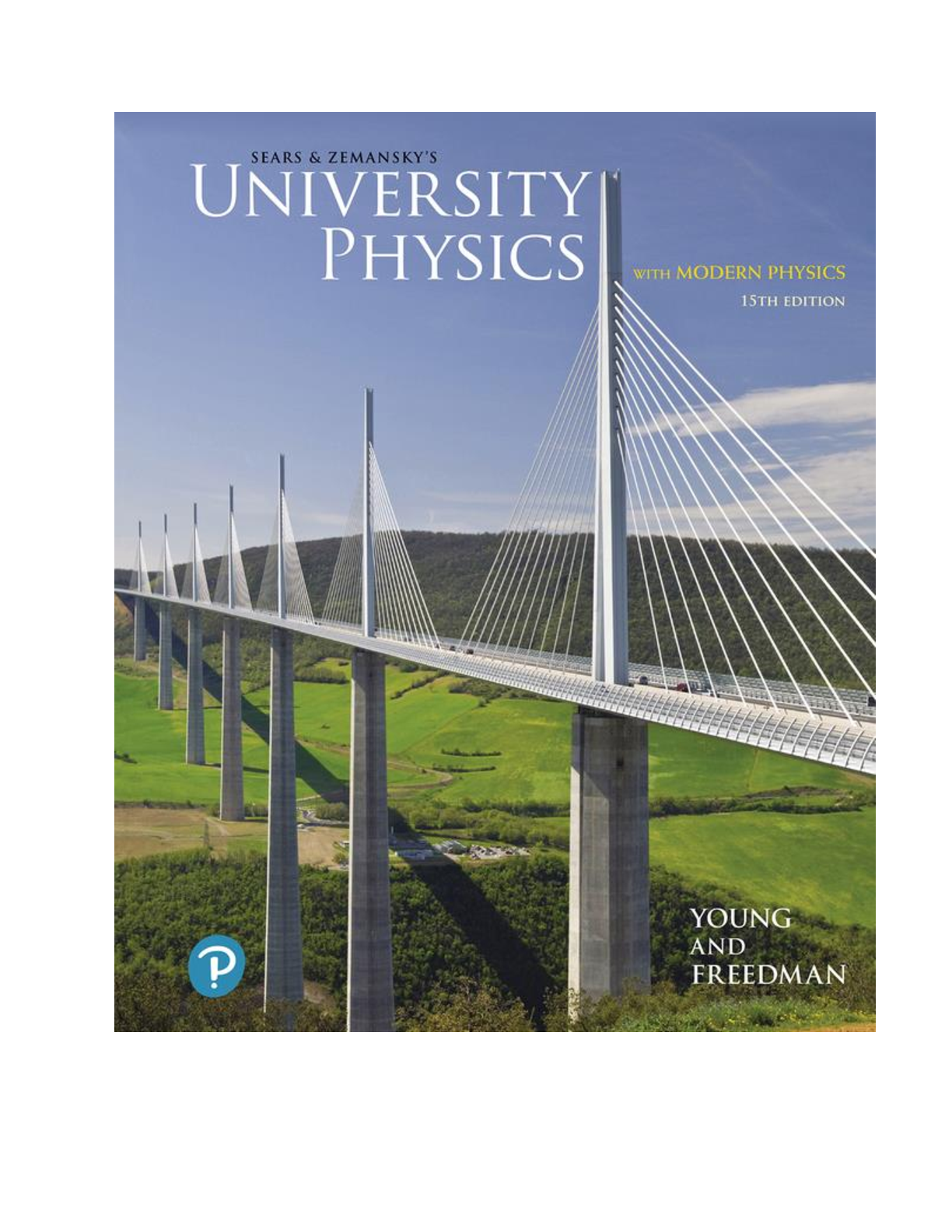
Buy this document to get the full access instantly
Instant Download Access after purchase
Add to cartInstant download
We Accept:

Reviews( 0 )
$20.00
Document information
Connected school, study & course
About the document
Uploaded On
Mar 09, 2022
Number of pages
1328
Written in
Additional information
This document has been written for:
Uploaded
Mar 09, 2022
Downloads
0
Views
70



 Strategic Management Creating Competitive Advantages, 10e Gregory Dess, Gerry McNamara, Alan Eisner, Seung-Hyun Lee.png)



 Gary Donell, Clarence Byrd, Ida Chen.png)



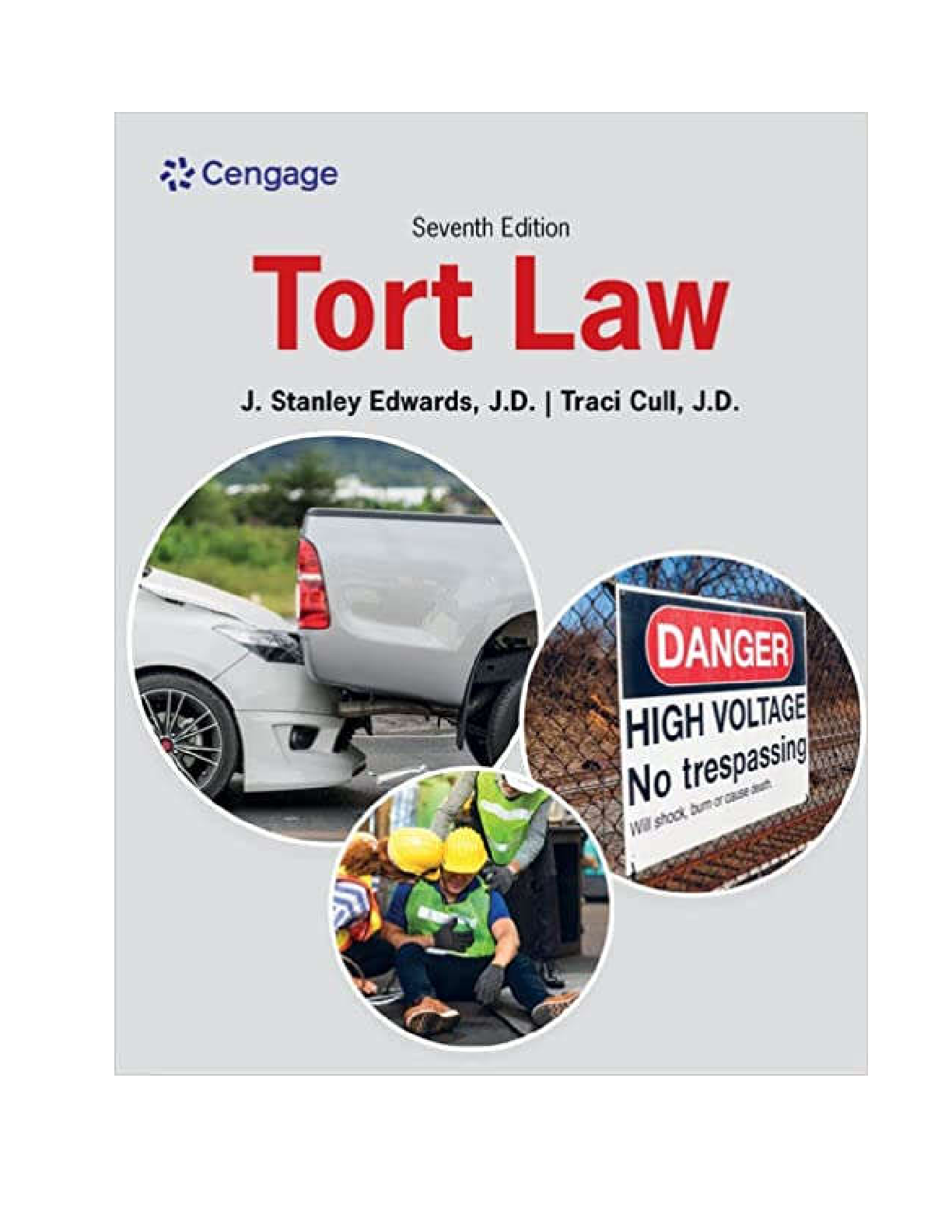
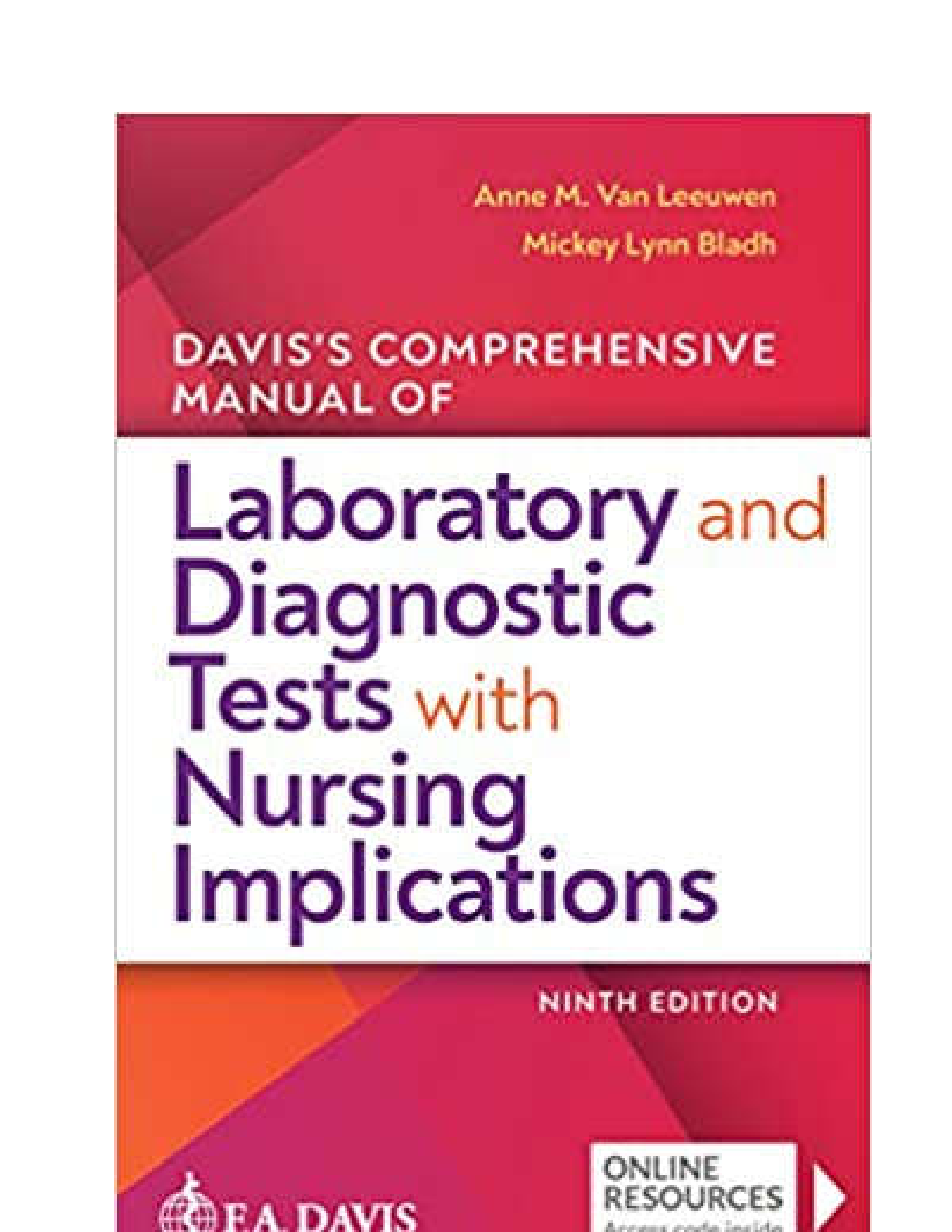
 By Hugh Young, Roger Freedman.png)
